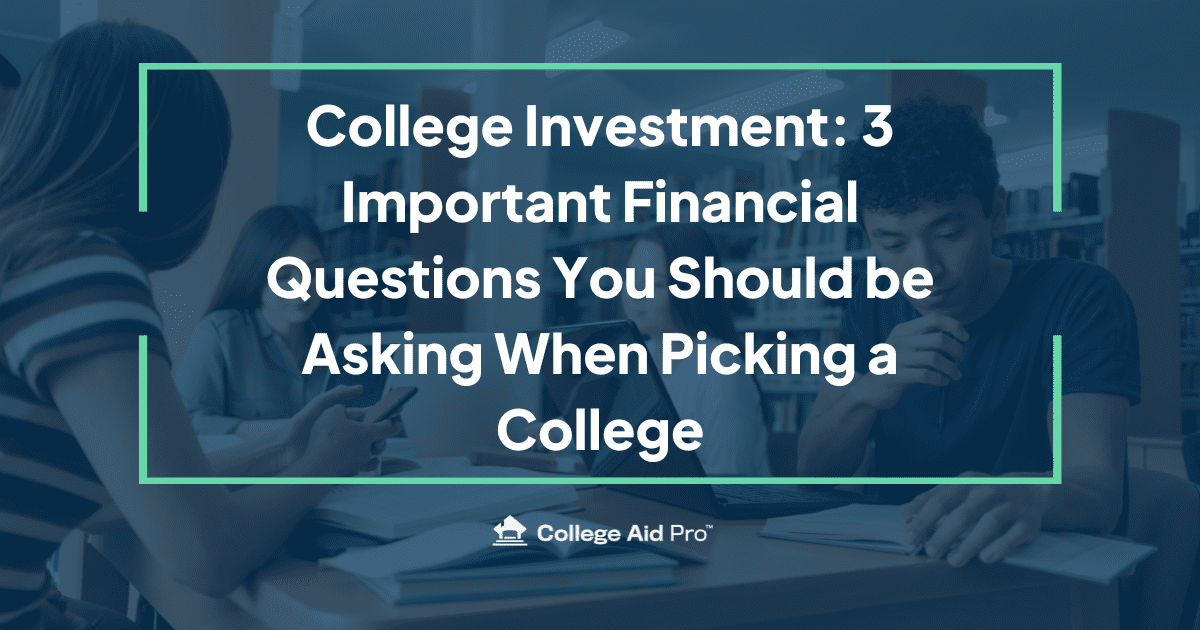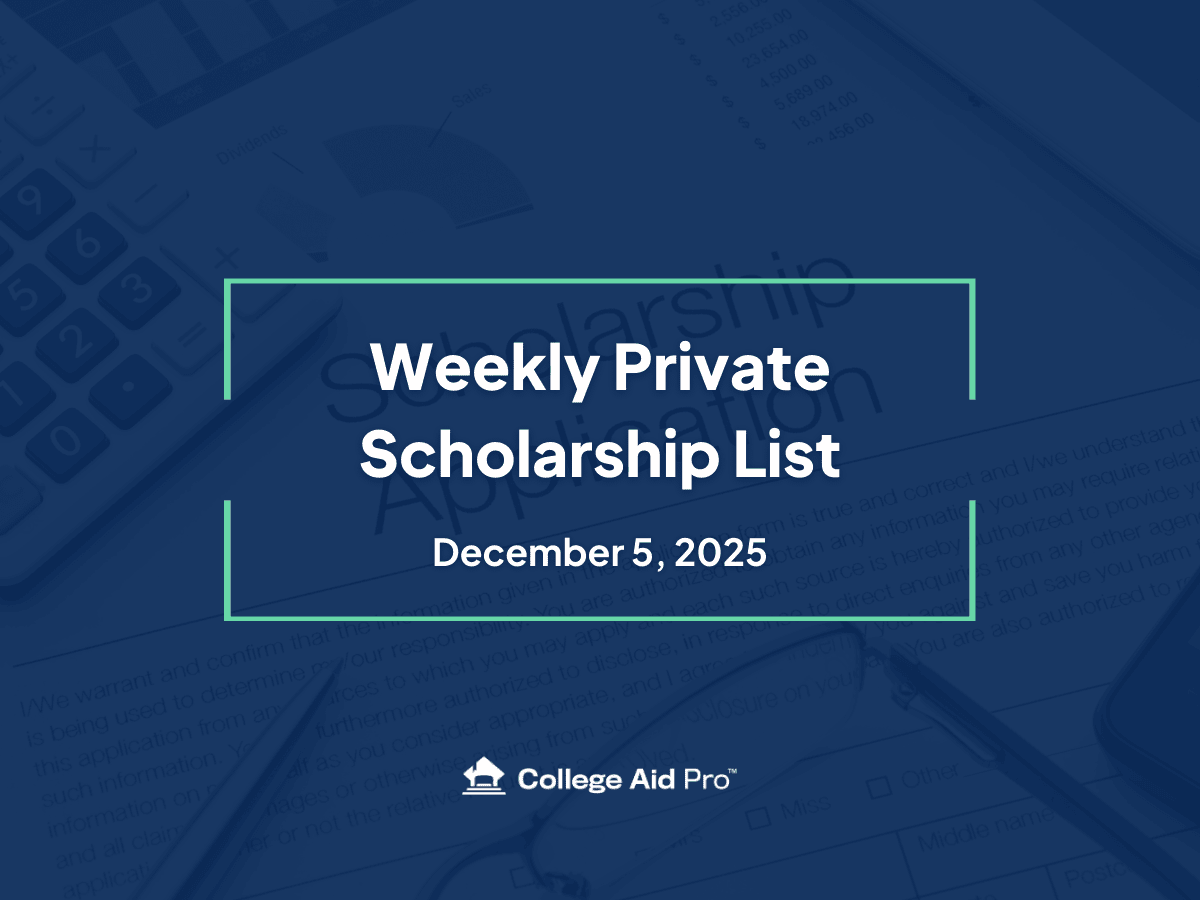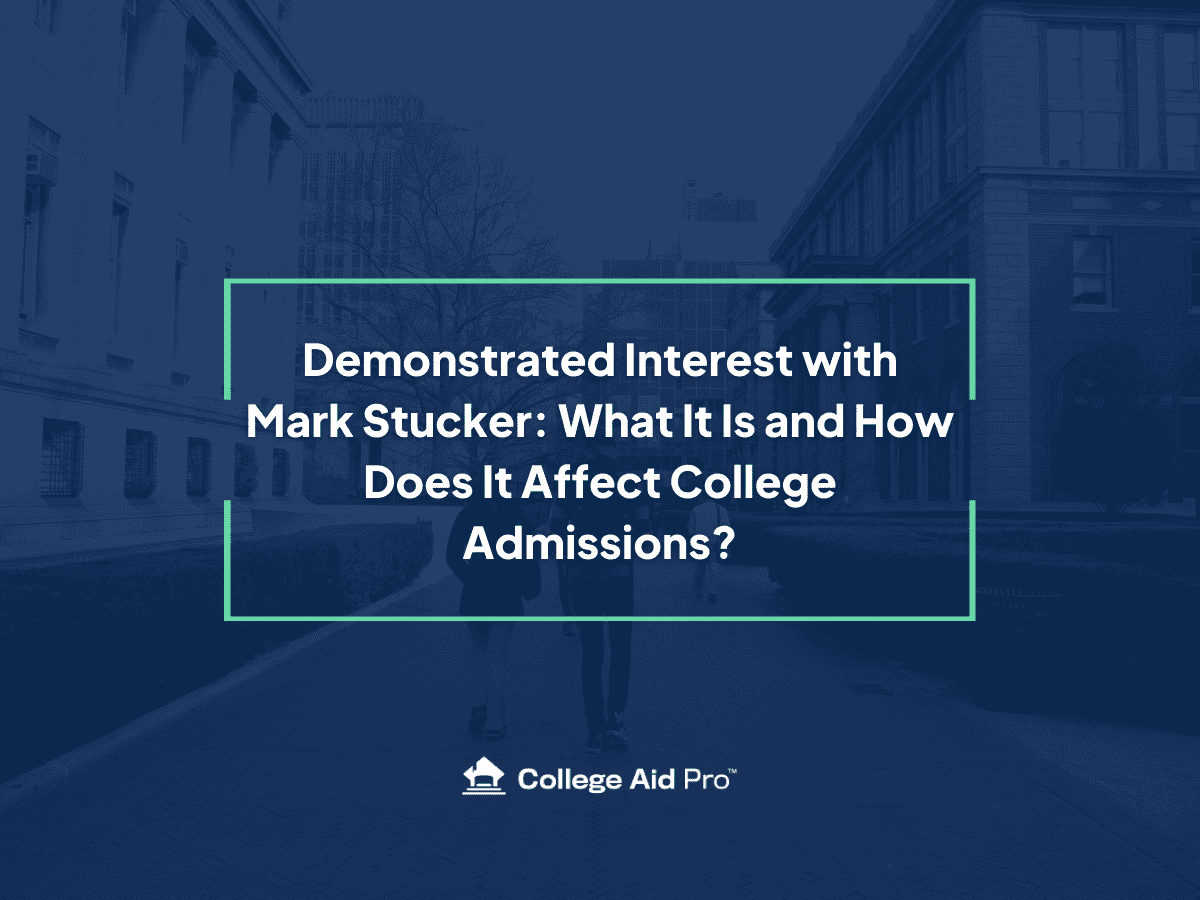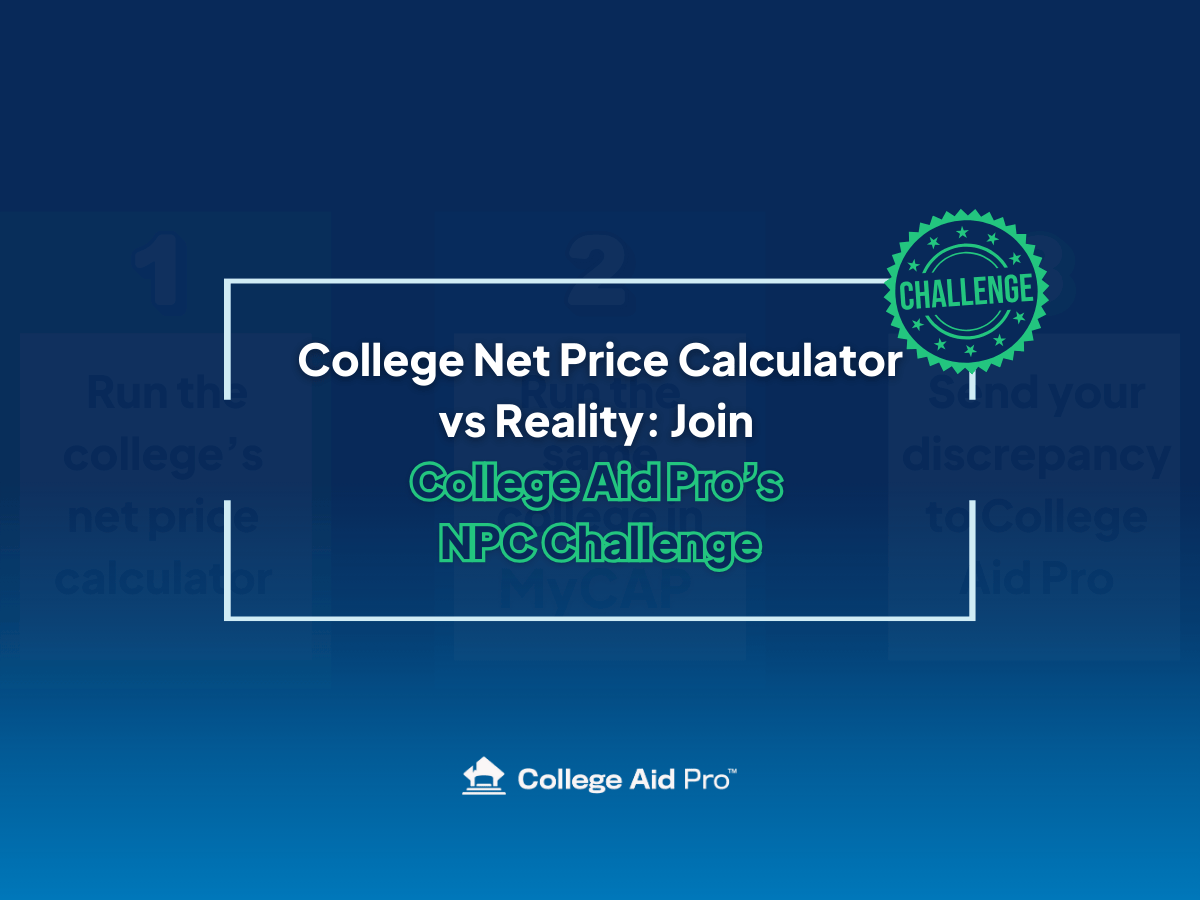All About the Money: 3 Important Financial Questions You Should be Asking When Picking a College
College is an investment.
And like all other investments, you should expect to get a great return on it.
After all, the costs of higher education are too steep to settle for anything less.
Unfortunately, college has become a reflexive endeavor in American culture. It’s a foregone conclusion for most families, and as a result, too many people vastly overpay for the college experience. Worse yet, they pick schools without truly investigating and deciphering the value of each college (and the specific field of study within it).
The sports teams, the campus Starbucks, and the gorgeous quad are simply icing on the cake. They’re window dressing on the larger and more essential question: “which college is the best investment for *my* family?”
As it turns out, there are three questions within that question that you should be asking when picking a college.
1. What’s the Actual Cost?
This is the definitive task for any college-bound family: to determine the actual cost of each school on their shortlist.
Make no mistake: the sticker price most colleges provide is a total illusion. It simultaneously allows universities to seem exclusive while letting them also seem generous when they provide hefty tuition discounts to families.
And they do.
For example, Harvard technically costs around $80,000 to attend, but over 70% of their students get financial aid. And families with an income under $65,000 aren’t expected to pay out-of-pocket whatsoever.
Harvard may seem like an extreme example, but that’s how most colleges work. Remember, all schools are businesses, and they want to incentivize students to attend.
Which leads us to the all-important questions college-bound families must ask: what’s the actual cost of attendance? What am I actually expected to pay?
Such “expectation” is integral, and there is quite literally an index number that college financial aid staffs use to determine how much support they will receive.
It’s called the Expected Family Contribution (EFC).
By calculating that number with College Aid Pro™, you can more accurately identify the actual cost of attendance.
2. How Much Should I Borrow?
Nearly 43 million Americans have student loan debt with an average balance of $36,510 per borrower.
Worse yet, over 2.5 million borrowers have loan debt in excess of $100,000.
College can be an enormous investment, and for most families, student loans will be an essential part of the conversation.
While that conversation must take a host of factors into consideration, it must ultimately answer a crucial question: “what will our monthly student loan payments be after graduation?”
Fortunately, College Aid Pro™ provides the fastest route to identifying those numbers. We can show you exactly what you’ll pay after graduation.
More importantly, we can help you identify affordable, lesser-known, top-tier schools that fit your wishlist without saddling you with decades of loan debt.
After all, we’re here to expand your horizons, not limit them.
We hear it all the time: parents are so eager to make their kids happy that they agree to a school way outside of their budget. When we point out how much more they’ll be spending (and how much they’ll owe), they simply shrug their shoulders and say, “we’ll figure it out.”
We love the optimism, but in reality, decisions like that do more than put families in the red. These decisions put families behind the proverbial eight ball and even eat into their retirement savings.
According to a recent study by Sallie Mae, a whopping 70 percent of families not only used their current income to pay for college in 2019-2020, but 14 percent withdrew from their retirement funds to cover the costs.
That’s a growing statistic that we desperately want to stop.
So, how can you determine the right amount to borrow?
We believe the right debt level is dependent on a student’s salary after graduation.
3. What Are the Outcomes?
We can’t say it enough: college is an investment. And while you deserve a good return on that investment, not all colleges (or majors) are created equal.
Generally speaking, we advise families to keep their total loans below their graduate’s first year salary.
The numbers don’t lie, so it pays to research the unemployment rates and salaries of certain majors. For example, geophysical engineers endure an 8.1% unemployment rate, over three times higher than the average rate among college graduates.
Why take out excessive loans — or any loans at all, for that matter — with such limited job prospects?
That’s why we encourage families to look at the “outcomes” of each school and field of study.
In other words, we believe that college-bound families need to know what graduates earn not only their first year back in the real world but five and ten years down the line.
Thanks to our tools, we can calculate that information instantly.
With our Outcomes tab, salary information is based on the specific degree you’re searching for — not just general graduate salaries from that particular school.
More importantly, all of the information we use is based on actual surveys from each college’s alumni. So as you compare your top schools by things like Forbes ranking, location, and cost of attendance, you’ll also be able to compare the specific earnings potential of each institution.
So, once you know what you’re getting in return for your investment, you can more confidently identify how much to invest.
These answers will lead to another defining question: are the outcomes of School X notably better than School Y?
In other words, if school X costs considerably more than school Y, but the graduate salaries are nearly identical, you’ll know which college is the better investment.
Getting started
At College Aid Pro™, our tools are designed to take the guesswork out of college planning.
More importantly, they’re optimized to help you stay future-focused and get fast, practical answers about what your college investment will look like.



